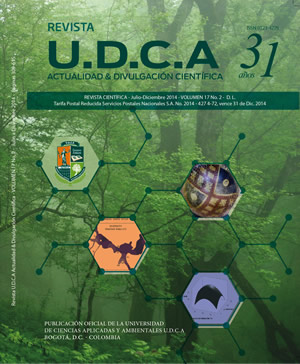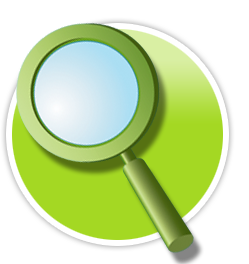Modelo dinámico para estimar la capacidad de carga de cuerpos de agua con piscicultura
Dynamical model to estimate carrying capacity in reservoirs with fish farming
Contenido principal del artículo
Resumen
Se propone un modelo dinámico para estimar la capacidad de carga en embalses con actividad acuícola intensiva. La propuesta fue obtenida generalizando el modelo tradicional de balance de fósforo de Dillon y Rigler, formulado en 1974, para cultivo en jaulas en embalses. El modelo es un sistema de dos ecuaciones diferenciales ordinarias que determinan la evolución temporal de la biomasa (Bm) de los peces y del fósforo disuelto (P). El planteamiento tiene en cuenta parámetros adicionales, como el fósforo proveniente de fuentes externas, variaciones en el régimen de alimentación, y la influencia de éstos al proceso de eutrofización del ecosistema. Se demuestra que el modelo de Dillon & Rigler es un caso particular del nuevo modelo tomando una tasa de alimentación constante y se generó una interfaz gráfica, utilizando el programa Mathematica7 ®, para simular diferentes escenarios de cultivo. El trabajo realizado pretende contribuir a la toma de decisiones para la adecuada planeación y operación de proyectos piscícolas, en embalses y en otros cuerpos de agua lénticos.
Palabras clave:
Descargas
Datos de publicación
Perfil evaluadores/as N/D
Declaraciones de autoría
- Sociedad académica
- Universidad de Ciencias Aplicadas UDCA
- Editorial
- Universidad de Ciencias Aplicadas y Ambientales U.D.C.A
Detalles del artículo
Referencias (VER)
BEVERIDGE, M. 1986. Piscicultura en jaulas y corrales. Modelos para calcular la capacidad de carga y las repercusiones en el ambiente. FAO documento técnico de pesca. Disponible desde Internet en: http:// www.fao.org/DOCREP/005/AD021S/AD021S00. HTM (con acceso 11/06/10).
BLACK, K.D. 2001. Environmental impacts of aquaculture. CRC Press, Boca Ratón (USA). 214p.
BOTTOM, D.L. 1997. To Till the water: a history of ideas in fisheries conservation. En: Stouder, D.J.; Bisson, P.A.; Naiman, R.J. eds.Pacific Salmon and Their Ecosystems: Status and Future Options. Ed. Chapman Hall (New York). p.569-597.
BRIGOLIN, D.; PASTRES, R.; NICKELL, T.D.; CROMEY, C.J.; AGUILERA, D.R.; REGNIER, P. 2009. Modelling the impact of aquaculture on early diagenetic processes in sea loch sediments. Marine Ecol. Progress Series. 388:63-80.
BUYUKCAPAR, H.M.; ALP, A. 2006. The carrying capacity and suitability of the menzelet reservoir (Kahramanmaras- Turkey) for trout culture in terms of water quality. J. Appl. Sci. 6:2774-2778.
CANOSA, A.; LÓPEZ, L.; MORALES, D.; MARTÍNEZ, P. 2008. Línea Base Microbiológica para Ajuste del POPA (Plan de Ordenamiento Pesquero y acuícola) del Embalse de Betania. Informe Técnico. Instituto Colombiano de Desarrollo Rural Integral (Colombia). Disponible desde internet en: http://www.huila.gov. co/documentos/P/POPABetaniaTexto.pdf (con acceso 10/04/10).
CROMEY, C.J.; NICKELL, K.; BLACK, D. 2002. DEPOMOD. Modelling the deposition and biological effects of waste solids from marine cage farms. Aquaculture. 214:211-239.
DILLON, P.J.; RIGLER, F.H. 1974. A test of simple budget model predicting the phosphorus concentration in lake water. J. Fish. Res. Board Can. 31:1771-1778.
DILLON, P.J.; EVANS, H.E. 1993. A comparison of phosphorus retention in lakes determined from mass balance and sediment core calculations. Water Res. 27(4):659-668.
FINDLAY, R.H.; WATLING, L. 1997. Prediction of benthic impact for salmon net-pens based on the balance of benthic oxygen supply and demand. Marine Ecol. Progress Series. 155:147-157.
LARSEN, D.P.; MERCIER, Y.H.T. 1976. Phosphorus retention capacity of lakes. J. Fish. Res. Board Can. 33(8):1742-1750.
MAGILL, S.H.; THETMEYER, H.; CROMEY, C.J. 2006. Settling velocity of feacal pellets of gilthead sea bream (Sparusaurata L.) and sea bass (Dicentrarchus labrax) and sensitivity analysis using measured data in deposition model. Aquaculture. 251:295- 305.
MILLENIUM ECOSYSTEM ASSESSMENT. 2005. Ecosystems and human well-being: synthesis. Island Press, Washington, D. C. Disponible desde Internet en: http://www.millenniumassessment.org/ documents/document.356.aspx.pdf (con acceso 15/07/10).
MORALES, V.V.; MORALES, R. 2005. Síntesis regional del desarrollo de la Acuicultura 1. América Latina y el Caribe. FAO Circular de Pesca No 1017/1.
PULATSÜ, S. 2003. The application of a phosphorus budget model estimating the carrying capacity of Kesikk. pr. Dam Lake. Turk. J. Vet. Anim. Sci. 27:1127- 1130.
SCHINDLER, D.W. 1971. A hypothesis to explain differences and similarities among lakes in the experimental lakes area, northwestern Ontario. J. Fish. Res. Board Can. 28(2):295-301.
SCHINDLER, D.W.; FEE, E.J. 1974. Experimental lakes area: whole-lake experiments in eutrophication. J. Fish. Res. Board Can. 31(5):937-953.
STICKNEY, R.R. 2003. How did we get into this mess? Junk science vs. real science. World Aquaculture. 34:71.
STIGEBRANDT, A.; AURE, J.; ERVIK, A.; HANSEN, P.K. 2004. Regulating the local environmental impact of intensive marine fish farming III. A model for estimation of the holding capacity in the Modelling-Ongrowing fish farm-Monitoring system. Aquaculture. 234:239-261.
SONZOGNI, W.C.; CHAPRA, S.C.; ARMSTRONG, D.E.; LOGAN, T.J. 1982. Bioavailability of phosphorus inputs to lakes. J. Environ. Qual. 11:555-562
VALLENTYNE, J.R. 1974. The algal bowl lakes and man. Dep. Environ. Fish. Mar. Serv., Ottawa. Misc. Publ. 22. 186p.
VOLLENWEIDER, R.A. 1968. The scientific basis of lake and stream eutrophication with particular reference to phosphorus and nitrogen as eutrophication factors .Tech. Rep. OECD, Paris, DAS/CSI 68. 27:1-182.







